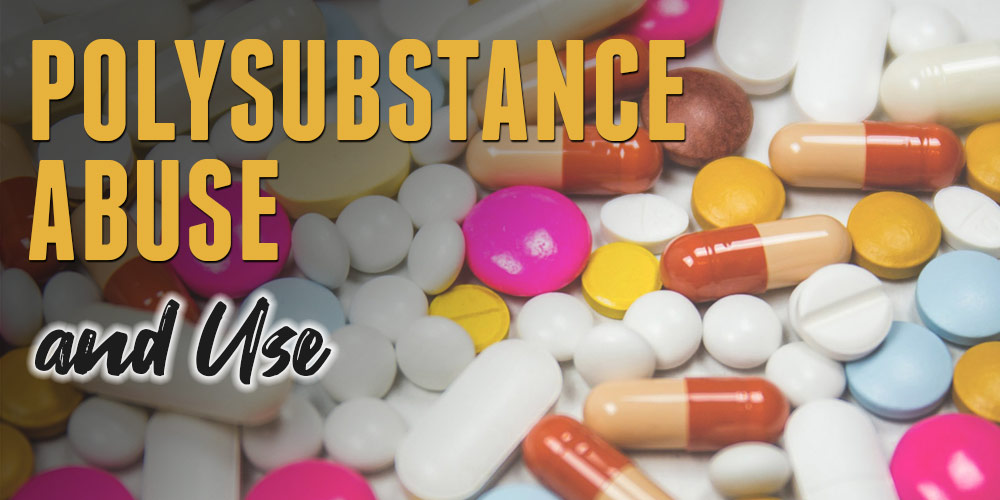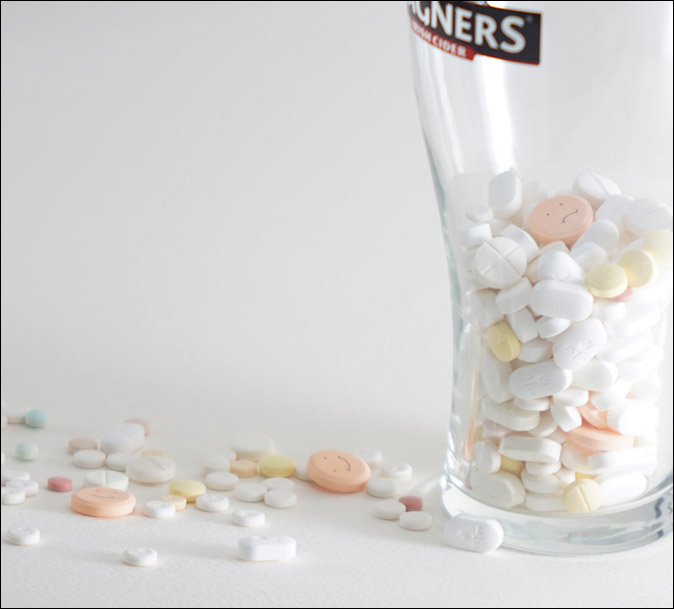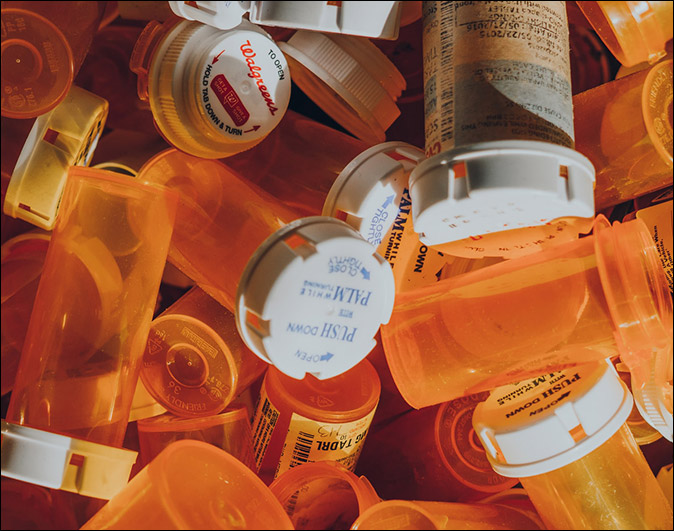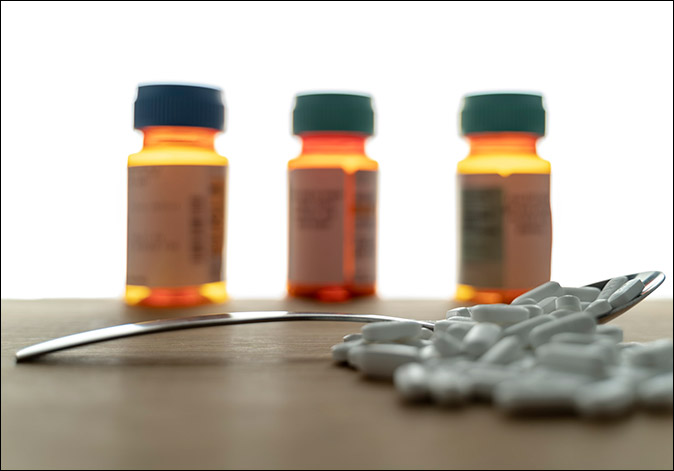
Polysubstance Abuse, or using more than one drug at a time, is increasingly common. The average adult in the United States is taking 4 medications at any one point in time.
So it’s not surprising that 2 million serious adverse drug reactions (ADRs) occur every year in the U.S. – resulting in 106,000 deaths annually from polysubstance use by prescription medications alone, according to the FDA.
While doctors can often ascertain the effects of two or more drugs interacting with each other in most people, patients often self medicate or drink alcohol – which can lead to serious adverse reactions. Additionally, interactions between medications are not always documented. The FDA states:
“ADRs are one of the leading causes of morbidity and mortality in health care.”
Adverse drug reactions are also a problem for people who are using non-medication substances such as illegal drugs.
It’s important to examine both medical and non-medical polysubstance abuse, poly addiction, and treatment options.

What is Polysubstance Use?
Polysubstance use usually refers to the use of two or more substances at any one time. These substances can be medical or non-medical, including alcohol and illegal drugs.
Many times, polysubstance use is seen as harmless and normal, for example, if a person is on antidepressants and also takes painkillers. Drinking alcohol while taking prescription medications can sometimes lead to adverse drug reactions.
Medically necessary surgeries, chronic illness, and accidents can lead people to routinely reach for painkillers, and over time they can find themselves addicted to them along with other substances they have been taking at the same time.
People can become dependant on taking more than one drug because they build up a tolerance to each one. This can inadvertently be the beginning of Polysubstance abuse.
When Does it Become Polysubstance Abuse?
Polysubstance abuse sometimes begins innocently when taking medications as directed.
As time goes by, the dependance to more than one drug can lead to reaching for substitutes if their medication or drugs are not easily available. People who suffer from polysubstance abuse crave the altered state that is produced from taking more than one drug at any given time.
The numbing effect or “high” that is desired can be achieved from taking a variety of drugs, and invariably people who suffer from polysubstance abuse don’t mind what drugs they take. As long as they get the feeling (or absence of feeling) that they’re craving, it doesn’t really matter to them what it takes to achieve the effects.
Polysubstance abuse differs from alcohol dependency or other drug addictions by the simple fact that more than one substance is abused.
What is a Poly Addict?
An alcohol-dependent person will routinely rely on alcohol and a heroin addict will seek out heroin.
In contrast, a poly addict is a person suffering from polysubstance abuse that requires more than one drug to feel satisfied.

Using multiple illicit drugs at a time is an extremely dangerous activity. It can have serious adverse effects, not just on the person’s health, but also on all aspects of their life.
A poly addict will often reach for another illicit substance when they have built up a tolerance to the drugs that they were using – choosing a potentially fatal combination, in an attempt to reach the altered state they desire.
If they can’t find the drug they want to use for getting high, they will substitute any drug they can find, as long as it serves the purpose of making them feel good.
Here are 6 Dangerous (and Often Fatal) Examples of Non-Medical Polysubstance Abuse:
- Heroin and Methamphetamine
- Heroin and Cocaine (Speedball)
- Benzodiazepines and Alcohol
- Opiates and Amphetamines
- Alcohol and Valium
- Cocaine and Alcohol
In recent years since the heroin epidemic began, using a stimulant drug such as cocaine or meth in conjunction with heroin has become common to offset the effects of the opioids, which is one reason the use of both drugs is increasing.
Polysubstance Dependence Diagnostic Criteria
The Diagnostic and Statistical Manual of Mental Disorders (DSM-5) is the manual used by psychiatrists to diagnose polysubstance abuse and other mental illnesses.
Three or more of the following symptoms must be present over 12 months, for a person to meet the criteria for substance use dependence (including polysubstance dependence or polysubstance use disorder):
- Increasing tolerance
- Withdrawal symptoms
- Loss of control
- Inability to stop using, despite the desire to do so
- Increase in the amount of time spent getting the drugs, using them, being under the influence, and recovering from use
- Interference with activities that don’t involve drug use
- Harm to self or others

Polysubstance Use Dependence Treatment
Before treating any patients for substance use disorders, it’s necessary that they undergo a wide range of diagnostic tests, including an assessment for underlying mental health disorders. If a person has a co-occurring mental illness, then the recovery path can differ and dual diagnosis treatment is required.
In most cases, the individual will usually begin the first stage of treatment with detoxification to ween off the substances involved and to manage the side effects of the withdrawal process.
A drug and alcohol detox program is administered under close medical supervision to ensure the patient is safe and comfortable during withdrawal from all substances, which usually takes a week to 10 days to complete in most circumstances.
It’s easy to understand there are endless combinations of substances, illnesses and personal circumstances that can interact – making treatment a very individualized process. Medical intervention is often required when a person is suffering from polysubstance abuse.
Related: 10 Questions to Ask When Searching for Addiction Rehab
Like with any addiction to drugs or alcohol, polysubstance abuse is treated using the same therapies and treatment modalities that have shown to be successful for recovery.
Some of the Most Common Treatment Therapies for Polysubstance Abuse
- Drug and Alcohol Detox Program
- Family Program
- Cognitive-behavioral therapy (CBT)
- Sober living residences
- Non 12-Step Rehabilitation
- Trauma Therapy for Trauma and Addiction
- Medication Assisted Treatment (MAT)
- Motivational Enhancement Therapy
- Relapse Prevention Therapy (RPT)
- Acceptance and Commitment Therapy (ACT)
After detoxification and treatment is complete, the real work of learning to live a life of sobriety begins. There are often deep underlying issues to contend with, and these can be mental or physical in nature and the feelings are often triggered by external environmental circumstances.
A person in recovery needs to use the tools learned during treatment to cope with the stresses of life and live a life of full purpose to prevent relapse.
It’s never too late to get help for polysubstance abuse or use, although seeking treatment early at the first sign of a problem will offer the best chance for a successful recovery.
Related Posts
- 8 Famous People Who Kicked Their Cocaine Addiction
People are often influenced by the rich and famous, and sadly that can mean normalizing…
- Alcohol Dementia Causes, Symptoms and Treatment
Note: Alcohol Dementia goes by many names including, alcohol-related dementia, alcoholic dementia, and alcohol-induced dementia.…
- 10 Questions to Ask When Searching for Addiction Rehab
Searching for the perfect addiction rehab can be overwhelming for most people. Whether you're searching for…
